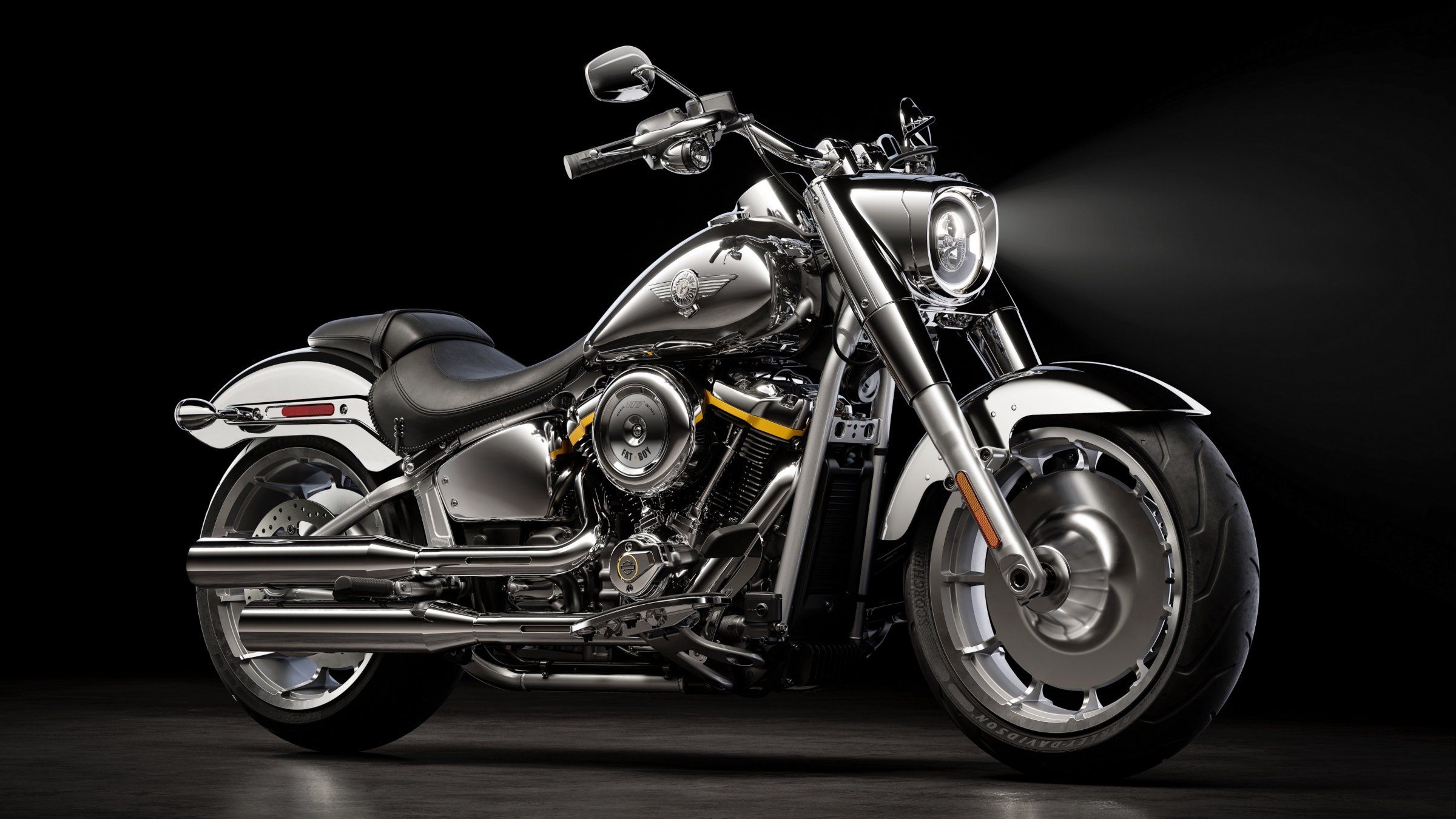From its iconic ride beneath Arnold Schwarzenegger’s T-800 in Terminator 2 to its appearance in Sons of Anarchy and many updates over a 35-year lifespan, the Harley-Davidson Fat Boy has long been arguably the most iconic hog. Fitting then that H-D is giving the Fat Boy an Icons Motorcycle Collection treatment, arguably making the musclebound cruiser with a factory-slammed suspension look better than ever for a limited-edition run.
Then again, the genesis of the seminal 1990 Fat Boy—the one that Arnie rode through Los Angeles spillways into pop culture’s vehicular pantheon—was sparked by aesthetics. According to H-D, executive Jerry Wilke spotted a Softail platform variant called “Lowboy” that had been created in 1987 by the brand’s Montreal dealership. He had an example, which featured a slammed suspension, aluminum disc wheel, fiberglass fender and wide handlebar, shipped to HQ in Milwaukee, where it was used as a reference by a styling team headed by Willie G. Davidson and Louie Netz to create the first-gen Fat Boy.
“On the 1990 Fat Boy model, the wheels are the defining characteristic,” wrote Davidson in his book 100 Years of Harley-Davidson. “The idea was to create a distinctive look using solid-cast disc wheels. We pushed this distinction further with a silver monochromatic paint job and silver powder-coated frame. Since the entire bike was silver, we needed something bright to set it off. I added yellow trim to the rocker boxes, the derby cover, the timer cover, and the ignition switch. We built a Fat Boy prototype, and I took it to Daytona so we would get one-on-one feedback from the riders.”
“The original Fat Boy model took the look, proportions, and silhouette of a 1949 Hydra-Glide and completely modernized it for a new generation of riders,” added Brad Richards, Harley-Davidson’s creative director and vice president of design whose own custom bike recently made it into the pages of Maxim. “Those riders appreciated our post-war design DNA but also found themselves drawn to the clean simplicity of contemporary industrial design.”
For the Icons Motorcycle Collection, H-D introduces the Fat Boy Gray Ghost, designed to shimmer in sunlight as if it “was machined from a solid alloy billet and polished to a mirror finish.” To create such an exceptional burnish, H-d employed a metal-treatment method favored by fine watchmakers called physical vapor deposition (PVD). Also known as thin film coating, the process involves vaporizing solid material in a vacuum and deposited onto the surface of a part, in this case the fuel tank and motorcycle fenders. Following the deposition process, the part is painted with a standard clear coat finish. Chrome plating is traditionally how customizers achieve a similar sheen, but PVD offers significantly more corrosion resistance to meet H-D’s quality standards.
Classic Fat Boy style cues include a round air cleaner, yellow accents on the lower rocker covers, powertrain covers, and tank console insert. Additional details—such as a leather seat valance with lacing and tassels, and a black leather tank strap with laced edging—add an extra hit of nostalgia, as do the 3D fuel tank medallions replicating the iconic winged graphic from the original Fat Boy. A commemorative tank console insert is etched with the bike’s unique serialization number, while the Icons Collection medallion is positioned on the rear fender. On the power front, the new Milwaukee-Eight 117—named for the eight total valves in its 45-degree V-twin and the 117-cubic-inch (1.9-liter) displacement—develops 101 horses and 122 pound-feet of torque, a slight increase in output over the Fat Boy 114.
Priced from $25,399 and limited to 1,190 examples globally, the Harley-Davidson Fat Boy Gray Ghost is available to reserve now.
